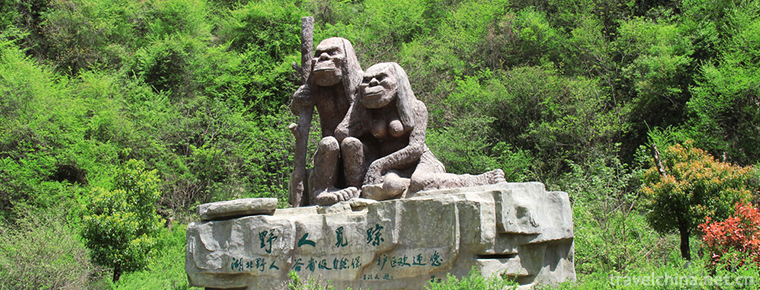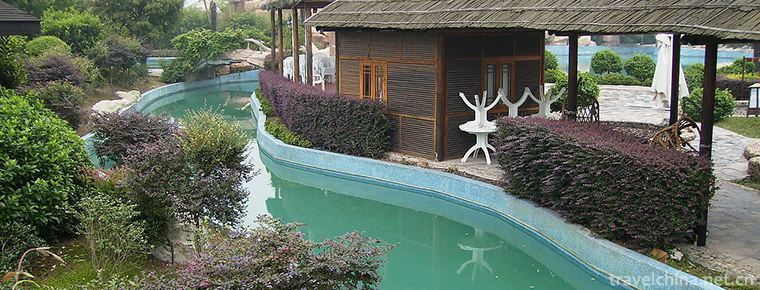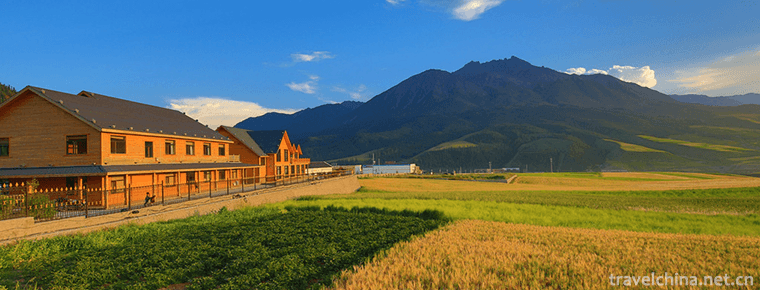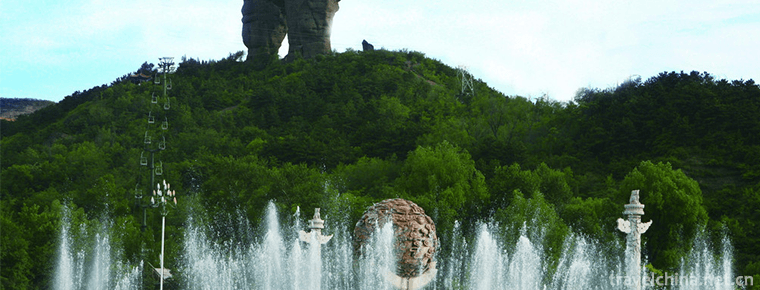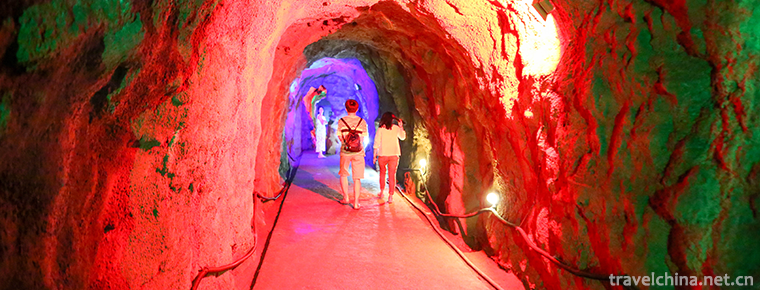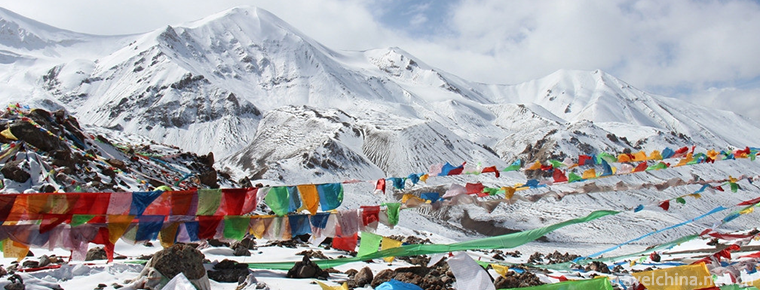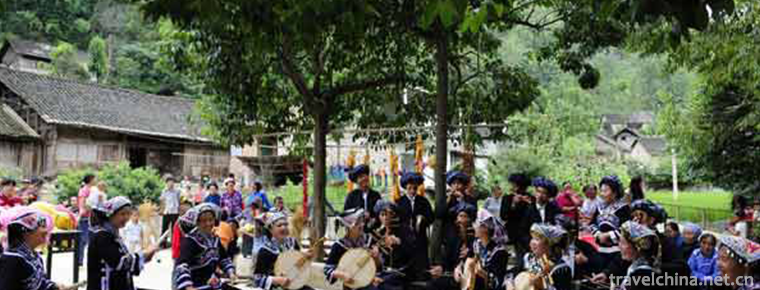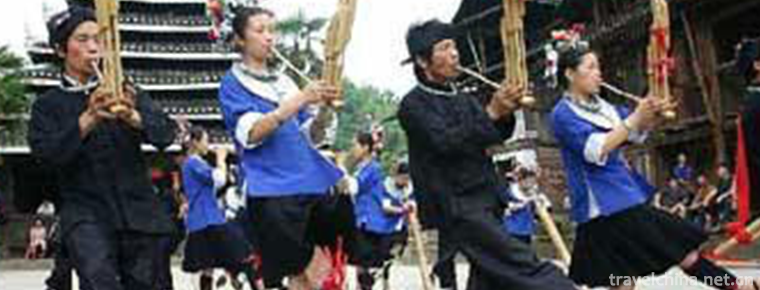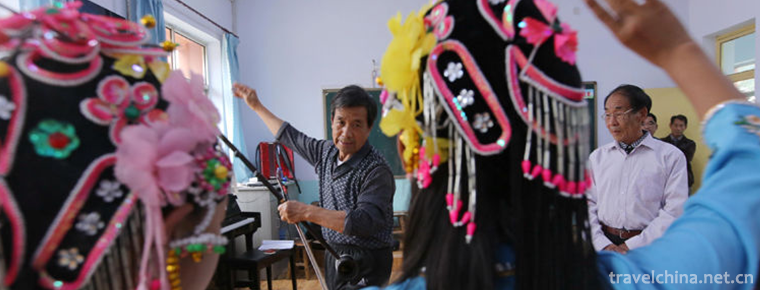Zhangye Great Buddhist Temple
Zhangye Great Buddhist Temple
The Great Buddha Temple was built in the first year of Yongan, Xia Dynasty (1098), formerly known as the Kaye Tathagata Temple, in the ninth year of Yongle, Ming Dynasty (1411), and in the seventeenth year of Kangxi, Qing Dynasty (1678), the Hongren Temple was renowned as the Great Buddha Temple, also known as the Sleeping Buddha Temple. It was listed as the fourth batch of key cultural relics protection units in China in 1996.
The Great Buddha Temple covers an area of about 23,000 square meters and sits in the East and west. There are only such buildings as the Great Buddha Hall, the Tibetan Sutra Pavilion and the Earth Tower on the central axis. The Great Buddha Hall is nine rooms (48.3 meters) wide, seven rooms (24.5 meters) deep, 20.2 meters high, two floors, and the top of the double eaves Xie Mountain. There are 31 painted clay sculptures in the hall, which are relics of Xixia Dynasty. The reclining Buddha is 34.5 meters long and is the largest indoor reclining Buddha statue in China. There are ten statues of disciples behind the Buddha, beside which there are statues of Youboyi, Youbosai and 18 Arhats. Tibetan Jingge is 21.3 meters wide and 10.5 meters deep, with a single eave and a hilltop. The earth pagoda, formerly known as the Mituo Thousand Buddha Pagoda, is a brick-and-clay Mizong covered pot Pagoda with a height of 33.37 meters.
The Temple houses the largest indoor reclining Buddha in China, the Nirvana image of Buddha Sakyamuni. He sleeps peacefully on the Buddhist altar 1.2 meters high in the middle of the hall. The Buddha is 34.5 meters in length, 7.5 meters in shoulder width, 4 meters in ears and 5.2 meters in foot length. One of the middle fingers of the Buddha can lie down on his back, and eight people can sit side by side on his ears. This shows how huge the statue is.
Dafo Temple scenic spot is located in the southwest corner of Zhangye City, Gansu Province. It is an important group of historical sites on the Silk Road. It is also a landmark building of Jinzhangye, a famous historical and cultural city. The scenic spots open to the outside world include the Great Buddha Temple built in Xixia, the Longevity Wooden Pagoda in Sui Dynasty, the Mituo Thousand Buddha Pagoda in Ming Dynasty, the Bell and Drum Tower and the Shanxi Guild Hall in Qing Dynasty, which is famous in Northwest China. The temple has many ancient buildings, towering trees, green grass and beautiful environment. In the 2008 Northwest China Tourism Marketing Conference and Tourism Equipment Exhibition, it was included in the "Magic Northwest 100 Sceneries" list.
Scenery introduction
Zhangye Dafo Temple is located in the southwest corner of Zhangye City. It is named for the largest indoor Buddhist Nirvana image in China. It is an important historical site group on the Silk Road. It is listed as a national key cultural relic protection unit and a landmark building of Jinzhangye, a famous historical and cultural city.
The scenic spots open to the outside world include the Great Buddha Temple built in Xixia, the Longevity Wooden Pagoda in Sui Dynasty, the Mituo Thousand Buddha Pagoda in Ming Dynasty, the Bell and Drum Tower and the Shanxi Guild Hall in Qing Dynasty, which is famous in Northwest China. Among them, the Great Buddhist Temple (where the Ganzhou Museum is located) is the main part of the scenic spot, which is a famous Buddhist temple in the Northwest inland. It is known as "the famous temple is stuffed, the scenic spot of the Buddhist state".
Historically, the eyes of the Xixia State Teacher excavated a sleeping Buddha covered with a green tile and built the Great Buddha Temple. Existing buildings include the Great Buddha Hall, the Tibetan Sutra Pavilion and the Earth Tower. The Great Buddha Hall is 33 meters high and 9 rooms wide, with a large scale. Each side of the temple gate is inlaid with six square meters of brick carvings. On the left is "climbing the Paradise", "Western Holy Land", and on the right is "entering the Samadhi" and "performing in the Garden of Samadhi". Inside the hall, there are wooden clay statues of Buddha, painted in gold, lifelike in shape, waking up if you see them, sleeping if you call them. Ten disciples were sculpted behind the sleeping Buddha, eighteen Arhats were sculpted in the galleries on both sides, and murals in the four walls of the hall were "Journey to the West" and "Shanhai Jing". There are more than 6,000 volumes of Buddhist scriptures issued by Ming Ying Zong in the cabinet of Tibetan Sutras. The scriptures are well preserved, and the Scriptures written in gold and silver powder are the most precious. Behind the temple, there is a 33.37-meter-high earth tower, one of the five elements of Zhangye Tower. The first and second floors of the tower are built in four corners, each with a unique style, which is rare in China.
Zhangye Grand Buddhist Temple has been appraised as Grade 4A Scenic Spot
There are the only religion halls of Xixia minority nationwide, the largest indoor clay statue of sleeping Buddha in Asia, the rare handwritten Jinjing of Ming Dynasty, and thousands of collections of exquisite cultural relics. In history, the Great Buddha Temple was one of the ancient temples closely related to the royal families of the Western Xia and Yuan Dynasties. It is recorded that the Empress Dowager Chang of the Xixia Dynasty, who was a devoted Buddhist
To live in the Great Buddha Temple. Kublai Khan, the ancestor of the Yuan Dynasty, and Tuo Huan Tie Muer, the emperor of the Yuan Dynasty, were both born in the Great Buddhist Temple. The Grand Buddha Temple has been renovated by the State for many times, and has been appraised as a Class 4A scenic spot by the State Tourism Administration. Today, it has become a tourist attraction integrating cultural relics collection, exhibition, tourism and national customs. Every year tens of thousands of Chinese and foreign tourists come to visit.
Historical relics of the Great Buddha Temple.
In 1966, stone tablets, bronze Buddhas, bronze mirrors, bronze pots, Buddhist sutras, etc. were found in the abdomen of the sleeping Buddha. A lead plate was also found, which recorded an earthquake in Hexi during the Ming Chenghua period and provided new information for the history of earthquakes in Hexi. The five Persian silver coins unearthed in 1977 by His Highness the Golden Pagoda, a subsidiary building of the Grand Buddha Temple, are testimony to the ancient trade and foreign trade exchanges between China and foreign countries. In addition, the monuments of the temple include Ming Xuanzong's "Imperial Temple of Baojue" and Ming Tongzheng envoy Mu Laifu's "Restoration of the Monument of Hongren Temple". There are many Buddhist Sutras in the temple, such as the Dazang Sutra.
Practical information
geographical position
Dafo Temple Scenic Area is located in Dafo Temple Lane in the southwest corner of Zhangye City, Gansu Province.
Admission ticket
Entrance ticket 41 yuan per person, student ticket 21 yuan per person
Opening Hours
8:00-18:00
Special reminder
Zhangye has a large latitude, so there is a significant difference between the north and the south. North China is hot in summer, cold in winter, big temperature difference between day and night, dry and little rain. In addition to sunglasses and hats, it is better to bring a thick coat to these areas to resist the cold in the morning and evening.
Delicious food
Zhangye's diet is mainly pasta. Comparatively rich in local characteristics are rubbing fish noodles, baked ears, mutton flour gluten, spiced rice, snacks, fried sausage, sheep's head soup, fish meal, gray bean soup, cake, steamed bread, baking powder, cold cake, rice noodles, sun fried artillery, chicken cushion rolls, yam oil fruit and paste, bean curd brain, etc. In addition to hand-held mutton and clear soup mutton, bacon mutton has long enjoyed a reputation. Wine has yellow rice wine, Southern Wine and barbecue, and the local custom of "no wine is not polite". On Ganzhou Snack Street, located in the East Street of Zhangye City, you can taste various delicious local snacks. Snack Street usually opens at 6 a.m. and closes at 3 or 4 a.m. the next day. The street is lined with snack stalls with various patterns and low prices. At both ends of the street, there are archaic archways, simple and unique, which reproduce the style of Zhangye in the past.
Traffic information
Public transportation
Road 4, 5, 6, 7, 8, 10, 12, 14, 15, 16, 23, airport, Hongshawo, Dafosi or Nanchengxiangkou can get off.
Taxi
Zhangye City can be reached by typing a table for about five yuan.
flight
After arriving at Ganzhou Airport, take the Airport Bus and get off at Nancheng Lane.
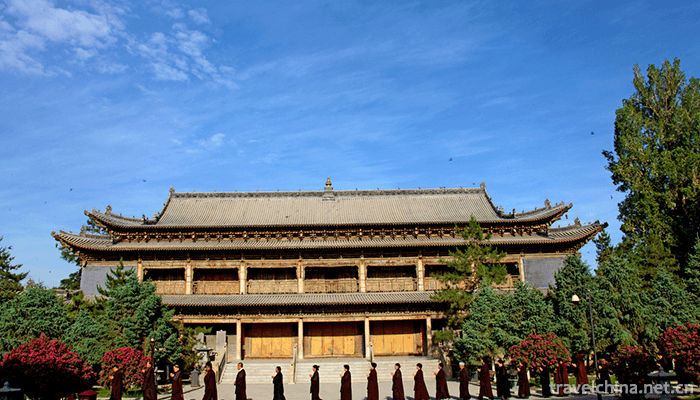
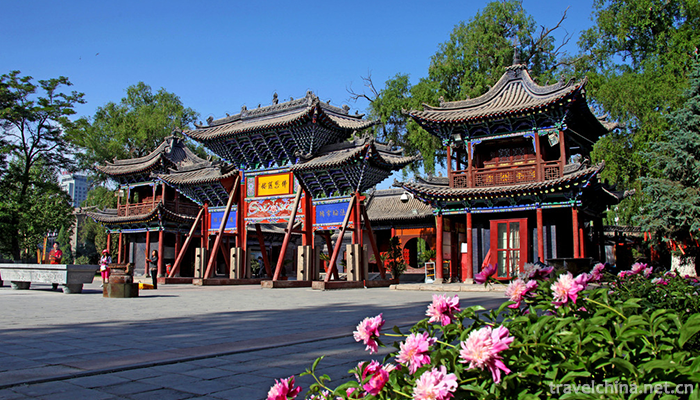
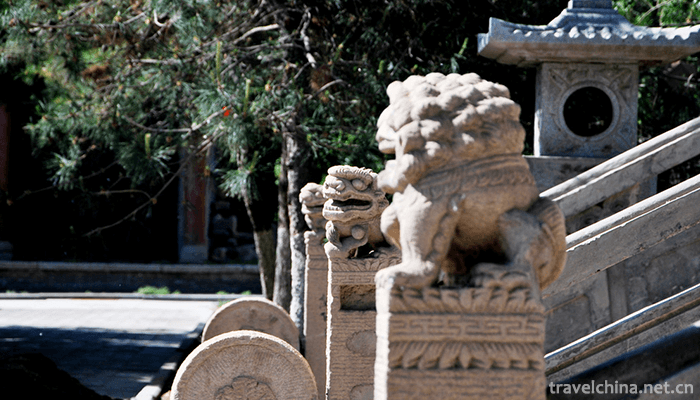
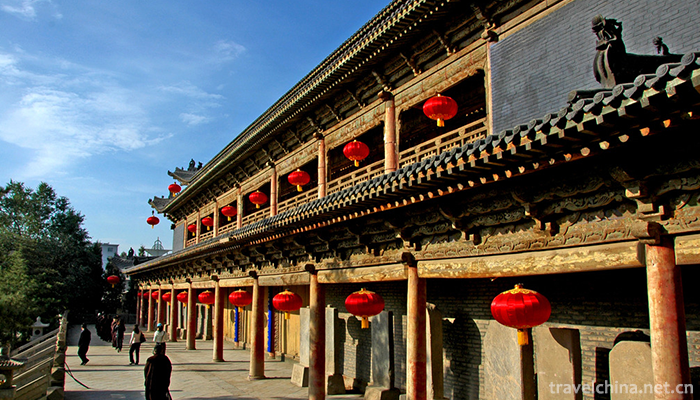
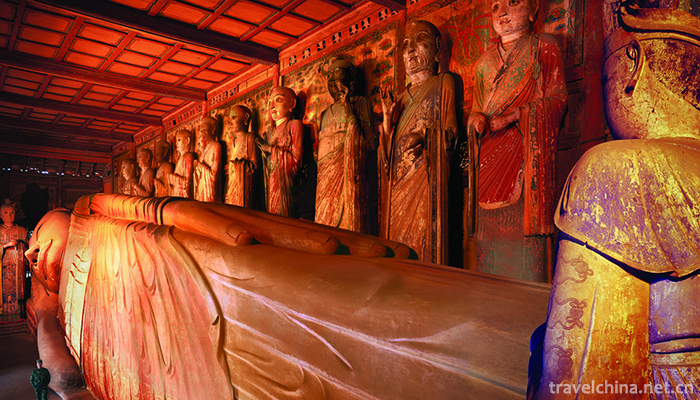
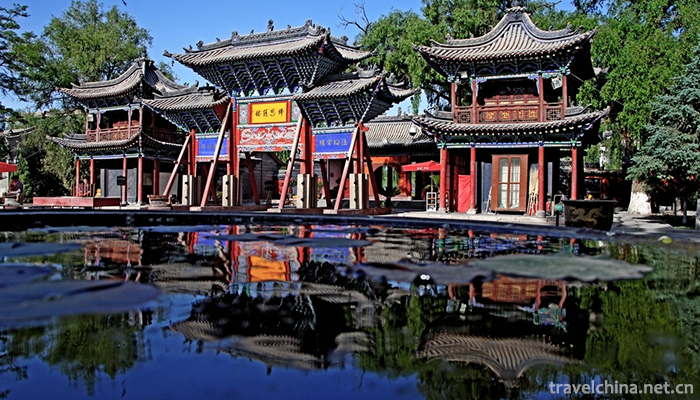

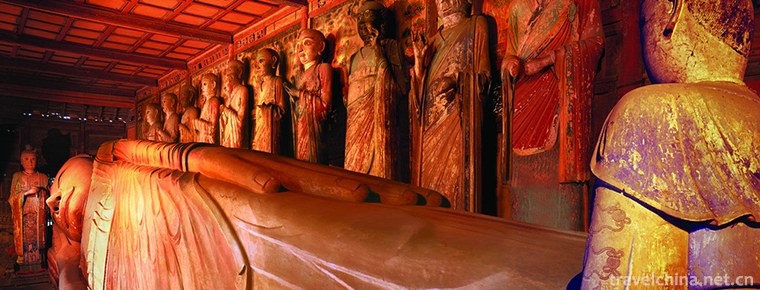
Zhangye Great Buddhist Temple
-
Shennongjia Forestry DistrictHubei Shennongjia
Shennongjia Forest District, referred to as Shennongjia for short, was established in 1970 with the approval of the State Council and directly under the jurisdiction of Hubei Province.
Views: 252 Time 2018-10-28 -
Golden Peacock Hot Spring Resort
Anhui Jinpeacock Hot Spring Resort is a commercial resort hotel which integrates vacation, fitness, leisure, entertainment, catering and accommodation. It covers an area
Views: 150 Time 2019-01-26 -
Qilian Mountain National Nature Reserve
Gansu Qilian Mountain National Nature Reserve is located at the northern foot of Qilian Mountain in the intersection zone of Qinghai-Tibet, Mongolia
Views: 183 Time 2019-02-07 -
The Twin Colossals
Shuangta Mountain is located ten kilometers southwest of Chengde Summer Resort in Hebei Province, with a total area of 3000 hectares and beautiful scenery. It is the largest natural scenic resort in C
Views: 321 Time 2019-02-08 -
Ziweidong Scenic Area
Seeing the pronoun of the first reaction of "purple cave" to "immortal" cultivation and residence, we often enchase that fairyland dream on this name.
Views: 158 Time 2019-03-22 -
Legend of Anima Qingxueshan
The Legend of Anima Qing Snow Mountain refers to the legendary Anima Qing Mountain God, who is a powerful and upright God riding a high-headed white horse, holding a Mani bag (a treasure).
Views: 202 Time 2019-03-28 -
Buyi Eight tone Sitting Singing
Buyi eight-tone sitting-singing, also known as "Buyi eight-tone", is a form of folk music and singing handed down from generation to generation by the Buyi people
Views: 139 Time 2019-04-04 -
Dong year
In Dong year, Dong language is called Ninggan, also known as Winter Festival or Yang Festival. Winter Festival was originally a festival of Yang surname of Dong nationality.
Views: 360 Time 2019-04-27 -
Parrot Opera
Parrot Opera, which originated in the reign of Qianlong in Qing Dynasty, inherited in Shanghe Village, Linzi District, Zibo City, Shandong Province, and is one of the national intangible cultural heri
Views: 187 Time 2019-07-25 -
Zhongshan Salt Water Song
Salt water song is a form of expression of Guangdong local folk songs, which is mainly spread among farmers and fishermen in the coastal and river network areas of Zhongshan, Panyu, Zhuhai and South C
Views: 102 Time 2019-08-03 -
Beijing Institute of Fashion Technology
Beijing Garment College was founded in February 1959, formerly known as Beijing Textile Technology College. In July 1961, it was renamed Beijing Chemical Fiber Engineering College. It was a key univer
Views: 353 Time 2019-09-06 -
Shixiang Lake
Shixiang lake is named after Shixiang temple, an ancient temple in the lake area. It is said that it was the place where Yan Yan, a general of the Three Kingdoms, rode an elephant to heaven.
Views: 211 Time 2020-10-16
